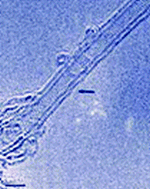Structural systematics in boron-doped single wall carbon nanotubes
Abstract
We report atomic level

- This article is part of the themed collection: New developments in nanomaterials
Maintenance work is planned from 09:00 BST to 12:00 BST on Saturday 28th September 2024.
During this time the performance of our website may be affected - searches may run slowly, some pages may be temporarily unavailable, and you may be unable to access content. If this happens, please try refreshing your web browser or try waiting two to three minutes before trying again.
We apologise for any inconvenience this might cause and thank you for your patience.
* Corresponding authors
a Central Research and Development Laboratories, Experimental Station, DuPont, Wilmington, USA
b Department of Materials Science and Engineering, University of Delaware, Newark, USA
c Laboratoire de Physique des Solides, UMR CNRS 8502, Université Paris-Sud, 91405 Orsay Cedex, France
d Department of Physics and Astronomy, Clemson University, USA
e Department of Electrical Engineering and Computer Science and Department of Physics, Massachusetts Institute of Technology (M.I.T.), Cambridge, USA
f Francis Bitter Magnet Laboratory, M.I.T., Cambridge, USA
We report atomic level

 Please wait while we load your content...
Something went wrong. Try again?
Please wait while we load your content...
Something went wrong. Try again?
P. L. Gai, O. Stephan, K. McGuire, A. M. Rao, M. S. Dresselhaus, G. Dresselhaus and C. Colliex, J. Mater. Chem., 2004, 14, 669 DOI: 10.1039/B311696D
To request permission to reproduce material from this article, please go to the Copyright Clearance Center request page.
If you are an author contributing to an RSC publication, you do not need to request permission provided correct acknowledgement is given.
If you are the author of this article, you do not need to request permission to reproduce figures and diagrams provided correct acknowledgement is given. If you want to reproduce the whole article in a third-party publication (excluding your thesis/dissertation for which permission is not required) please go to the Copyright Clearance Center request page.
Read more about how to correctly acknowledge RSC content.
 Fetching data from CrossRef.
Fetching data from CrossRef.
This may take some time to load.
Loading related content
